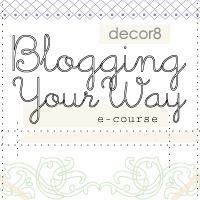T-shirt Fabric Rose Tutorial
 Tuesday, June 21, 2011 at 9:36PM
Tuesday, June 21, 2011 at 9:36PM 
I made this little rose from scraps left over from another project. The fabric is knit jersey but you can use any fabric you wish for these flowers. In fact, jersey is not the easiest fabric to work with so you might try your first flower using quilting cotton or a crisp silk such as dupioni like I used for this flower. These instructions are from several vintage flower making books written around the turn of the 20th century; this is the method milliners used to make silk flowers long before they were commercially available.

Begin by cutting out a variety of squares sized from 2” to 7”. For this project I used three 2” squares, three 3” squares, three 4” squares and two 5” squares. For a larger flower continue to add larger squares as needed. Also, for your first flower you might want to start with 3” squares as your smallest as they are easier to handle.

Fold each square diagonally in half and press.

Fold the folded edge of the triangle over about ¼”. The size of this fold is not critical and variety makes for a more realistic looking flower.


Thread a needle with heavy thread (I used buttonhole thread) and knot the end. Stitch around the cut edges of the triangle using a running stitch. Make sure your first and last stitches go through the folded-over bit to secure it.

Pull up the stitches to gather the petal. For the first layer you want to gather it up tightly. When you gather the petal it will form a cup.

You can place a flower stamen in the middle if you wish.

Make sure the folded lip is facing away from the concave part of the petal (the hollowed out side). Knot your thread securely and cut off.

Make another petal in the same manner but don’t pull the gathering stitches up quite as tight. Place the second petal on top of the first, overlapping the edges a little bit and stitch the two petals together using hand stitches. You will continue adding petals in a circular manner. You can add them in a clockwise or counter-clockwise direction, just pick one and be consistent throughout the project.

Continue adding petals one at a time, increasing the size of the square used as each layer is complete and stitching down the gathered edges as needed to hold the flower together.

As the flower gets bigger you will need to gather each petal less and less to allow them to fit around the larger circumference.

I try to make my last layer from the two largest squares so each goes about half way around the flower, overlapping each other just a bit.

Depending on how you plan to use your flower you might want to finish the back just a bit. Cut a circle of fabric large enough to cover the exposed stitching and glue or stitch it into place.

You can make a leaf for your flower in several ways. On the pink flower pictured above, I used a free-standing machine embroidery design by A Bit of Stitch. I stabilized the jersey with some fusible interfacing before stitching. I recommend doing this regardless of the method you choose to make your leaf to give it some stability. For this leaf I drew a simple leaf shape on my scrap of fabric and cut it out using pinking shears. I sketched some veins on the leaf and used a straight stitch on my machine to outline them. You could also draw a leaf shape and satin stitch around the edge before cutting close to the stitching. Or you could use a rubber stamp and rayon velvet to emboss a leaf design before cutting out with pinking shears (this is pretty when you are using a fabric like silk for the flower). Glue or stitch the flower on top of the leaf.

You can add a pin back to the flower or simply use two safety pins to attach it to the garment. Enjoy wearing your new flower!






















































